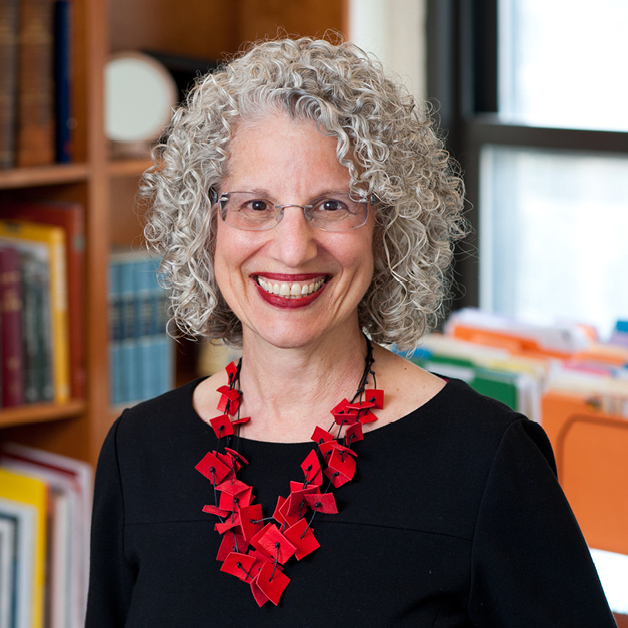The Torah’s Stories—and Our Own

During these Yamim Noraim—these Days of Awe—we might expect to be poring over biblical texts that exhort us to act honestly, compassionately, and justly: the Ten Commandments perhaps, or the Holiness Code of Leviticus 19. Instead, the Torah portions we read as we usher in the New Year are stories that are filled with unbearable pain—first, in Genesis 21, Abraham banishes his wife Hagar and their son Ishmael, and then, in Genesis 22, he almost sacrifices his son Isaac. As we gather to celebrate Rosh Hashanah, why do we hear stories that are filled with themes of alienation, betrayal, and loss?
Countless rabbis, teachers, writers, artists, and ordinary readers over the centuries have tried to understand these texts by parsing verses, imagining the emotions of voiceless characters, and offering theological interpretations. To these countless readings, I add yet another: these texts spotlight the pain and suffering that exist within our midst, the heartache that is sometimes apparent but ofttimes invisible.
Gut-wrenching pain has accompanied me for many years now, and I’m acutely aware that this year, 5784, marks twenty years since the sudden, untimely deaths of both my son, Elie, and five months later, my husband, Gershon. For several years after their deaths, I found these texts—describing the loss of one’s closest loved ones and the rejection and possible sacrifice of one’s own child—too painful to read on every level; even now, a generation later, the stories sting both emotionally and theologically.
Over the years, I have come to appreciate that by foregrounding some of the most searing narrative portions of the Torah on Rosh Hashanah, our tradition demonstrates the power of storytelling in processing our pain. Just as the Torah shares an account of these painful experiences, we, through the telling and retelling of our own stories, strive to find some meaning, strength, and comfort in our distress. Storytelling—when focused on human suffering and foibles, on strength in adversity and lessons to be learned— offers a way of coming to terms with our challenges. That God opened Hagar’s eyes to see the well of water reminds us that support can be found around us if we open ourselves up to it. Her survival models a resilience that is essential to our own.
Storytelling also enables us to extract attributes and values that can nourish us and those that come after us. It gives us a way to transmit love through the generations. I cherish moments when I can share stories with my grandchildren—silly stories, touching stories, family stories passed down throughout the generations. When one of my grandchildren casually notes that “Saba Gershon”—for whom he is named—would have been proud of him, it feels like a salve on my heart. As the next generation internalizes our stories and incorporates them into the narratives of their lives, our collective story moves forward.
That the Torah, and these Torah readings in particular, are read in community, further reminds us that others can hold our suffering when the burden is too great for us to do so alone, that others can offer comfort and share our pain. Our tradition knew what attachment research has only been able to prove in the last decade: that our pain, our experience of distress, is attenuated by contact with a close friend or family member and that communal support further enhances this effect.
Hearing these readings, it is easy to simply judge the actions of our biblical forebears. There is nothing wrong with doing that—indeed, it can be instructive. Yet I suggest that we can derive additional meaning from the text by empathizing with the biblical figures in ways that give us a window into the struggles of those around us. We can recognize—sometimes as a result of its absence in the stories—how much reaching out to others can affect them positively.
This focus on stories finds its echoes in the educational vision of JTS. As the new academic year—which coincides roughly with the new Jewish year—begins, we immerse our students in the stories of the Jewish people—through texts both traditional and contemporary; written, visual, and musical; texts that we study with head, heart, and soul. And our students learn to do so with others, in havruta, in community. The leaders we train grow to access the riches of our tradition, and they in turn, inspire others to see Judaism as a fortifying resource in their lives. Their studies also rouse them to pierce complacency and ameliorate suffering, inspiring others to do the same—whether on a small scale or on a communal, national, or global scale.
In the past months alone, students in our Center for Pastoral Education, including our rabbinical and cantorial students, have offered compassionate care to people in hospice, nursing homes, mental health clinics, soup kitchens, congregations, and more. Despite the war in Ukraine, we’ve continued to run a joint academic program in Jewish Studies at the National University Kyiv-Mohyla Academy. And with support from the scholarship named for my son, one of our undergraduates spent the summer on a Jewish farm exploring regenerative agriculture and researching how new farming techniques might mitigate climate change. These are just some of the ways we harness our educational work to help people write new stories for themselves, adding new links to the chain of our tradition.
May the new year bring healing and resilience to all—as individuals and as a community, for the Jewish people and in the world at large.
And may you have a sweet and joyful 5784.



